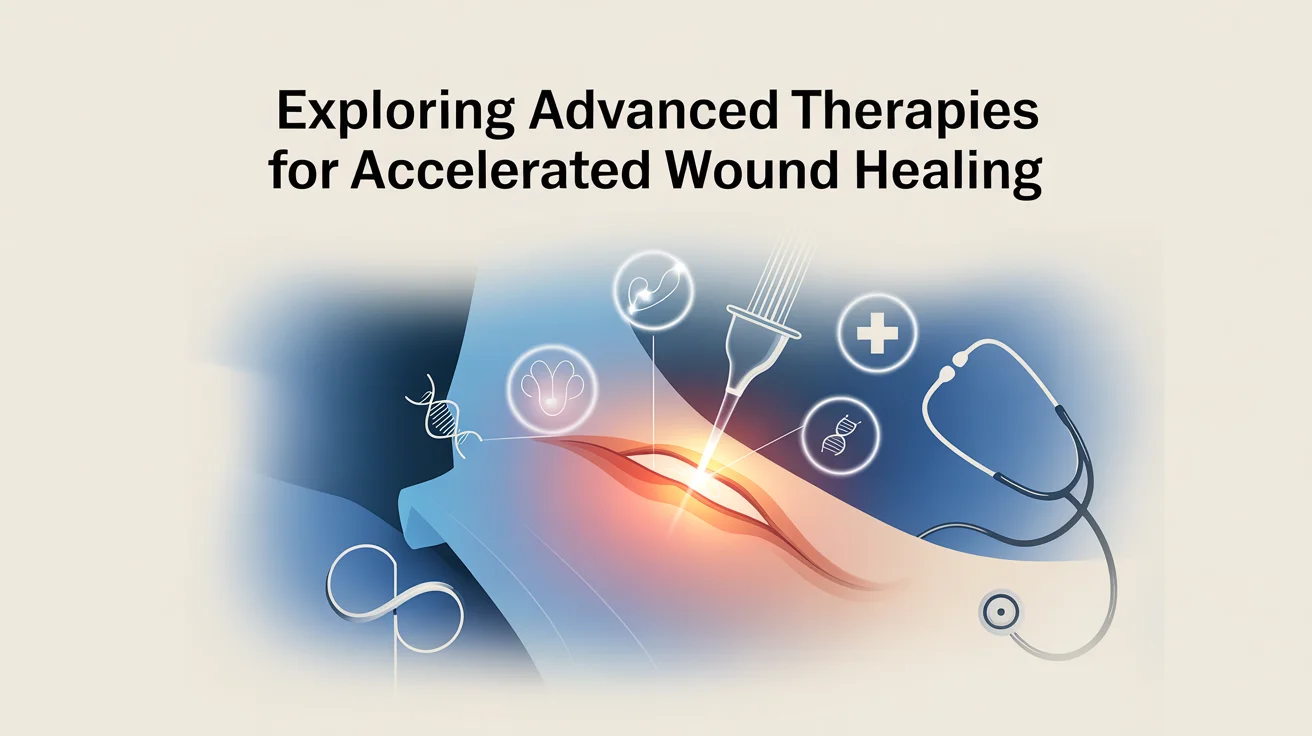Exploring Advanced Therapies for Accelerated Wound Healing

Wound healing can take time and patience. Delayed recovery can lead to infection and discomfort. Finding ways for accelerated wound healing is crucial for health and daily activity.
Recent advances in therapy have made faster recovery possible. Simple steps and innovative treatments now support better healing outcomes. Understanding these options helps you make informed choices for care.
Explore the therapies below to see how accelerated wound healing can be achieved.
Understanding the Basics of Wound Healing
Wound healing involves several stages. The body first stops bleeding through clot formation. Then, inflammation helps protect against infection. Tissue growth occurs to repair damage.
Finally, the wound closes and strengthens over time. Proper nutrition and hygiene are important for each stage. Small injuries can heal faster with proper care.
Monitoring the wound prevents complications. Knowledge of these stages helps identify the best therapies for accelerated wound healing.
Importance of Early Intervention
Early treatment can reduce complications. Cleaning wounds promptly prevents infection. Applying proper dressings supports healing. Early care also limits scarring. Some therapies work best when started quickly.
Regular monitoring helps track progress. Ignoring injuries can prolong recovery. Early intervention improves overall outcomes. Timely action is a key factor in accelerated wound healing.
Role of Nutrition in Healing
Proper nutrition supports tissue repair. Protein is essential for cell growth. Vitamins like C and A strengthen the immune response. Minerals such as zinc help with tissue repair. Hydration keeps cells functioning well.
Poor diet slows healing and increases infection risk. Balanced meals promote faster recovery. Nutrition also helps maintain energy for daily activity. Healthy eating is a natural step toward accelerated wound healing.
Advanced Dressing Techniques
Modern dressings protect wounds more effectively. Some maintain moisture to support tissue growth. Others remove excess fluid to prevent infection. Specialized materials can reduce pain during dressing changes.
Dressings may also include slow-release medication. Proper application speeds up recovery. Regular changing prevents buildup of bacteria. Choosing the right dressing is critical. These techniques directly contribute to accelerated wound healing.
Oxygen Therapy Benefits
Oxygen therapy increases oxygen in damaged tissue. This supports cell growth and repair. It also helps fight bacteria in the wound. Some methods deliver oxygen directly to the wound site. Improved circulation enhances the effect.
Patients may see faster closure of wounds. Oxygen therapy is safe when supervised. Regular sessions are often recommended for chronic wounds. Increased oxygen can significantly support accelerated wound healing.
Low-Level Laser Treatments
Low-level laser treatments stimulate tissue repair. The therapy uses light to improve cell activity. It can reduce inflammation and pain. Laser therapy may also boost collagen production. Sessions are usually short and painless.
It works well for chronic or slow-healing wounds. Patients often notice quicker improvement in skin appearance. Using red light therapy can enhance the results. These treatments are part of advanced methods for accelerated wound healing.
Growth Factor Applications
Growth factors are proteins that encourage cell growth. Applying them to wounds can speed recovery. They help regenerate tissue faster. Growth factor therapy may also reduce scar formation. This method is often used for chronic wounds.
Regular applications show improved healing rates. It can complement other treatment methods. Careful use ensures effectiveness without side effects. Growth factors are a promising tool for accelerated wound healing.
Stem Cell Approaches
Stem cells have the ability to form new tissue. Applying stem cells to wounds can repair damage quickly. They can also reduce inflammation in the wound area. Stem cell therapy may help with chronic or diabetic wounds.
The method promotes faster tissue regeneration. It is usually done under medical supervision. Early results show fewer complications. Stem cells offer advanced solutions for those seeking accelerated wound healing.
Hydrotherapy for Recovery
Hydrotherapy uses water to improve healing. Warm water can increase blood flow to the wound. Specialized water jets help remove debris and bacteria. Hydrotherapy may also reduce swelling. It can support tissue repair in larger wounds.
Sessions should be monitored for safety. Proper technique prevents skin damage. Hydrotherapy complements other treatment options. Water-based care can be an effective step in accelerated wound healing.
Electrical Stimulation Techniques
Electrical stimulation encourages cell growth. It improves blood flow to the affected area. This method can reduce swelling and pain. Electrical therapy also promotes collagen production. It is often used for chronic wounds.
Sessions are controlled and painless. Proper application ensures better healing results. Electrical stimulation works well alongside other therapies. It is another advanced method for accelerated wound healing.
Negative Pressure Wound Therapy
Negative pressure wound therapy uses suction on wounds. This removes excess fluid and bacteria. It also helps tissue grow more quickly. Dressings are sealed to maintain pressure. The therapy encourages faster closure.
Regular monitoring ensures safety. It is used for larger or slow-healing wounds. Patients often see improved outcomes in a shorter time. This technique supports advanced approaches to accelerated wound healing.
Physical Therapy and Mobility
Movement can help improve circulation. Better circulation brings nutrients and oxygen to wounds. Physical therapy may include gentle exercises. This also prevents stiffness in injured areas. Mobility supports overall health during recovery.
It reduces the risk of complications from immobility. Combining therapy with wound care promotes faster healing. Exercise plans should match the patient’s condition. Physical activity is a practical step toward accelerated wound healing.
Choosing the Right Combination
Using multiple therapies can be more effective. Combining nutrition, advanced dressings, and therapies speeds recovery. Each wound may need a different approach. Regular monitoring ensures safety and progress.
Professional guidance helps choose the best options. Patients respond differently to treatments. Combining methods often yields faster and more complete healing. Coordination improves long-term outcomes. Selecting the right combination is key to accelerated wound healing.
Simple Home Care Tips
Keeping wounds clean is very important. Wash your hands before touching the wound. Gently rinse the wound with clean water. Use simple dressings to cover it.
Change dressings every day or if wet. Eat healthy foods to help your body heal. Rest and avoid stress on the wound. Watch for the following:
- redness
- swelling
- pain
Small daily steps can help with accelerated wound healing. Avoid scratching or picking at the wound. Follow any instructions from your healthcare provider carefully.
Explore Advanced Therapies for Accelerated Wound Healing
Accelerated wound healing is now more achievable with advanced therapies. Proper care, nutrition, and treatment choices support faster recovery. Combining different approaches often improves results. Monitoring progress prevents complications and promotes safety.
Early intervention plays a crucial role in success. Patients can take practical steps to support healing daily. Understanding and using these therapies helps improve overall outcomes efficiently.
For other topics, visit our blog. We do have more!











